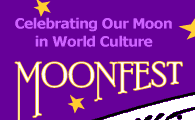


|
||||||||||||||||||||||||||||||||||||||||||||||
|
SOURCES THEATER
MUSIC
DANCE
FILM
SCIENCE, RELIGION & LORE
Share this website on social media and via email! Tweet |

I want!, I want!
William Blake, 1793
|
The moon and the sun cause the Earth's tides, but the moon has a much greater effect. The moon's gravity pulls on the Earth's oceans. High tide aligns with the moon as the Earth spins underneath it. Another high tide happens on the other side of Earth because gravity pulls the Earth toward the moon more than it pulls the water. When the sun, Earth and moon line up at full and new moons, they produce higher than normal tides. |